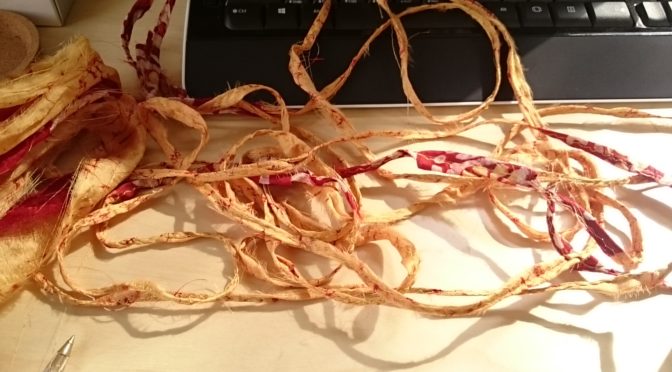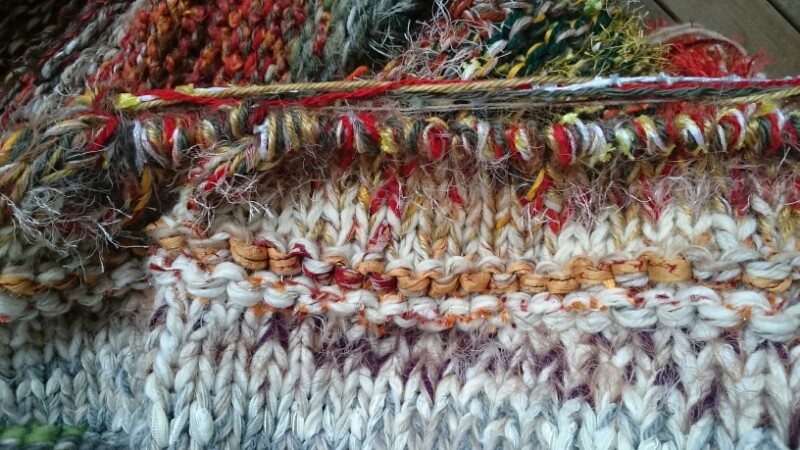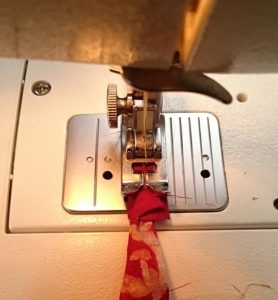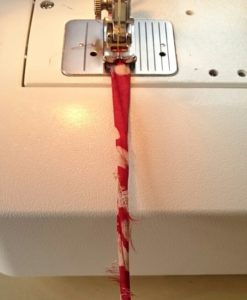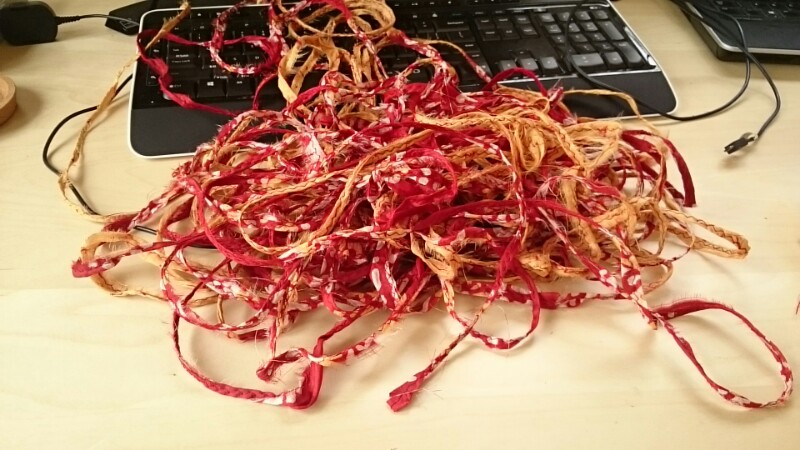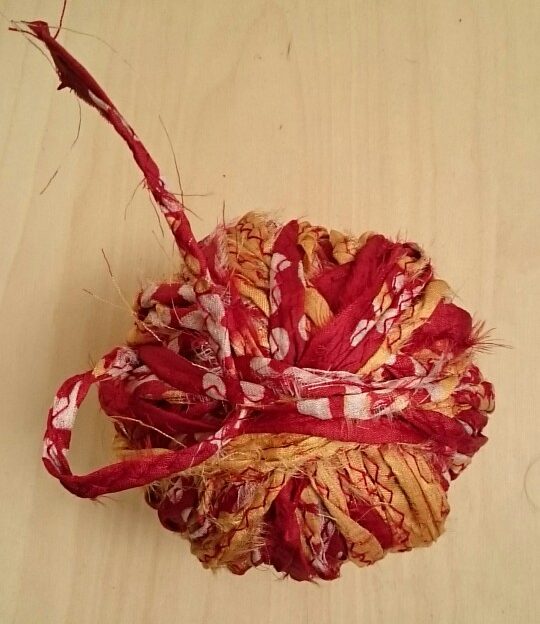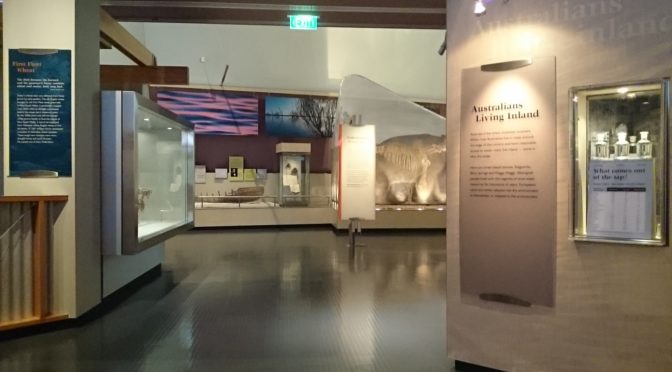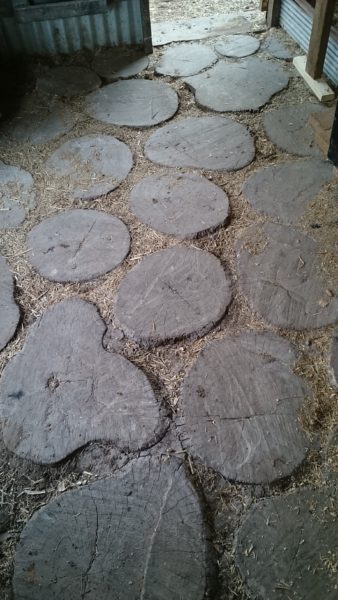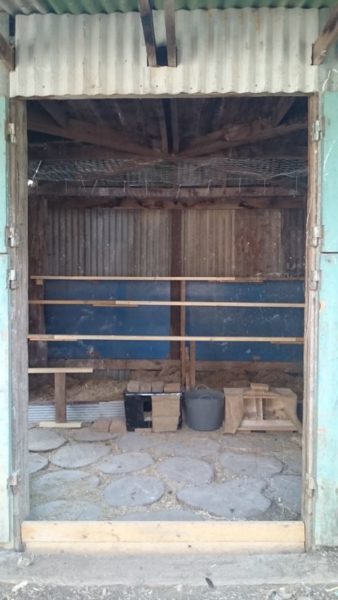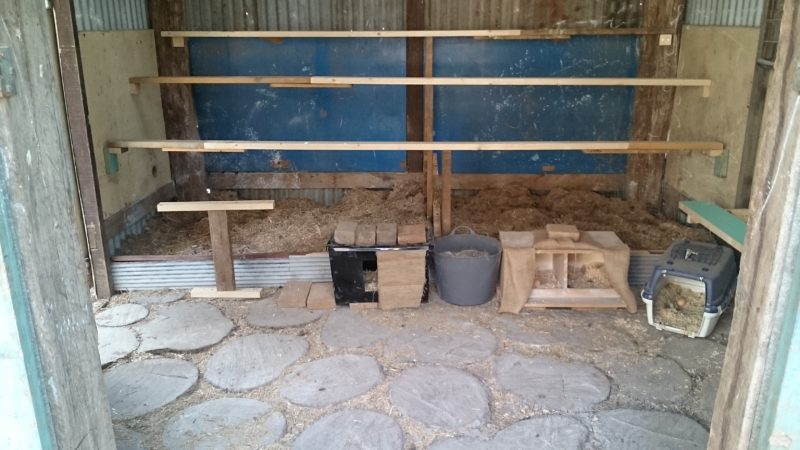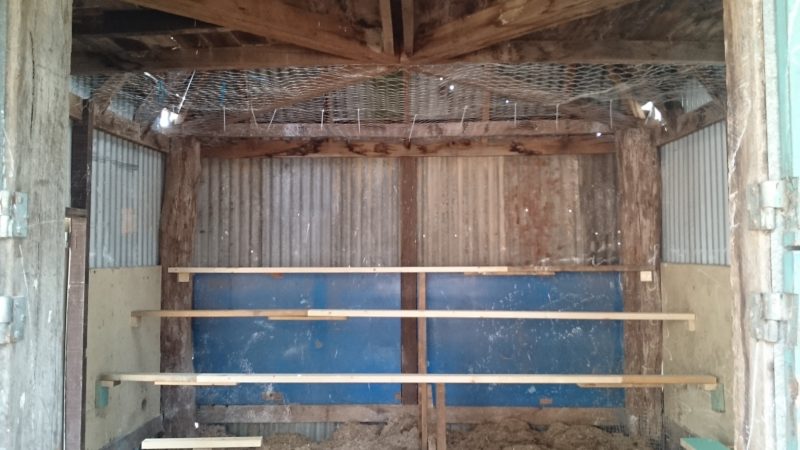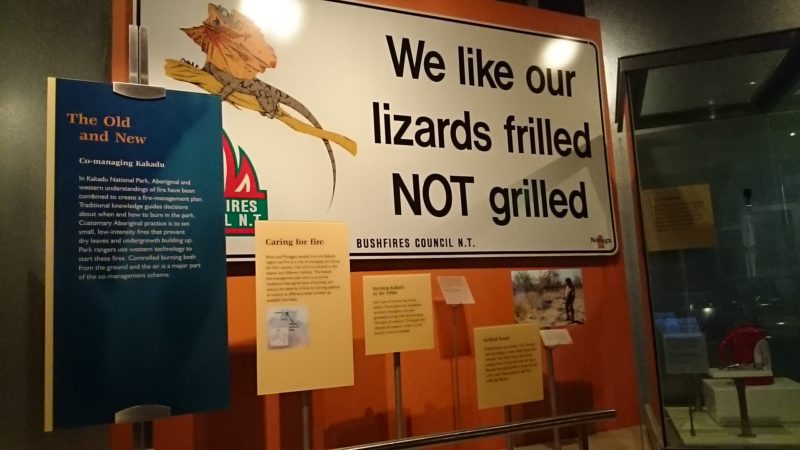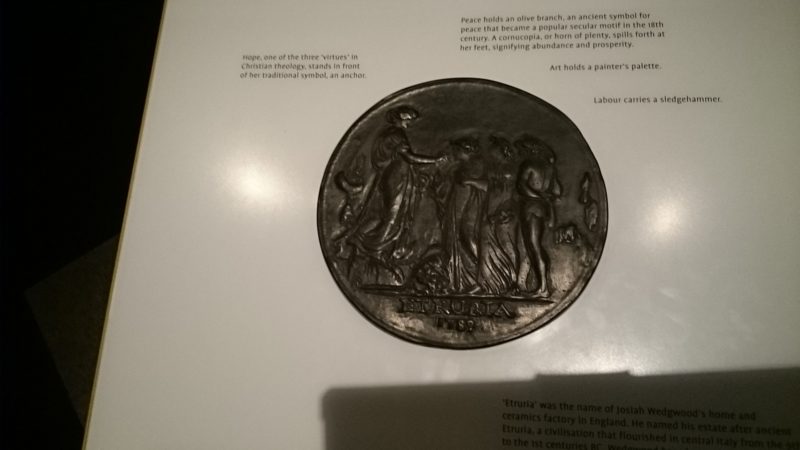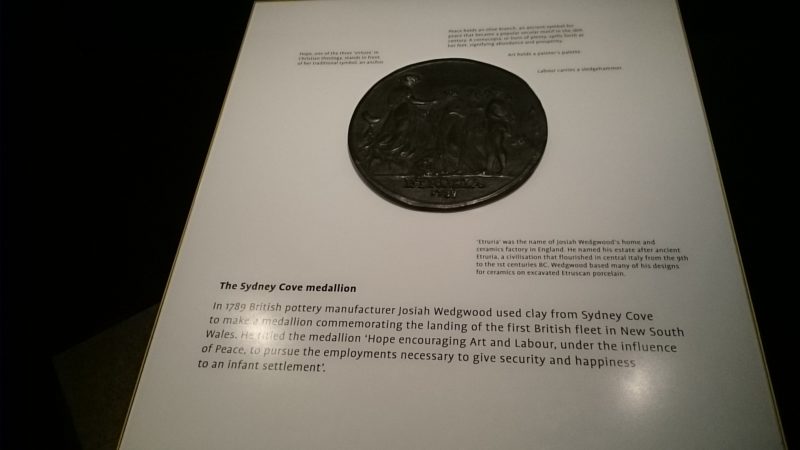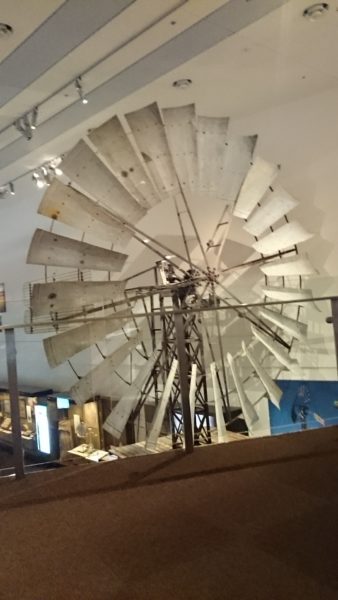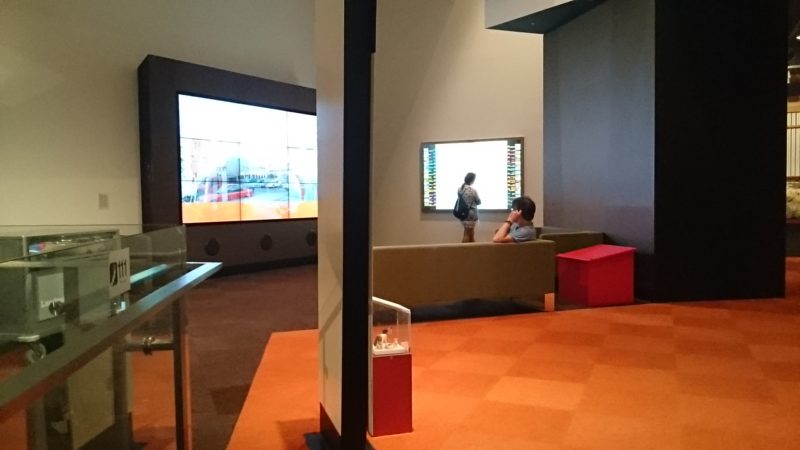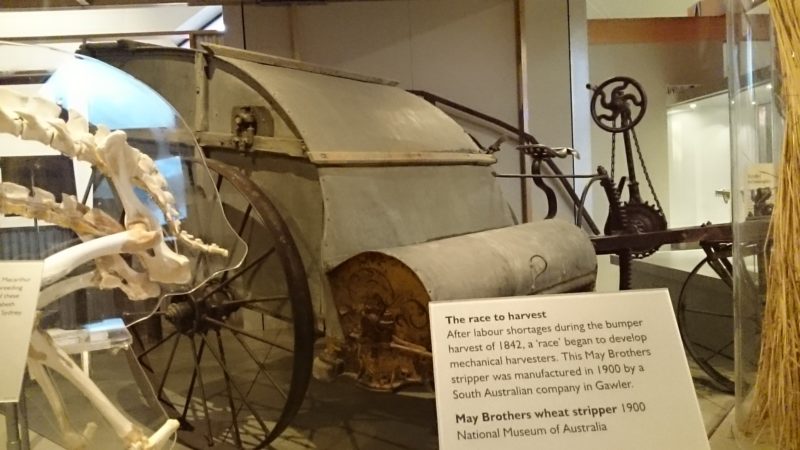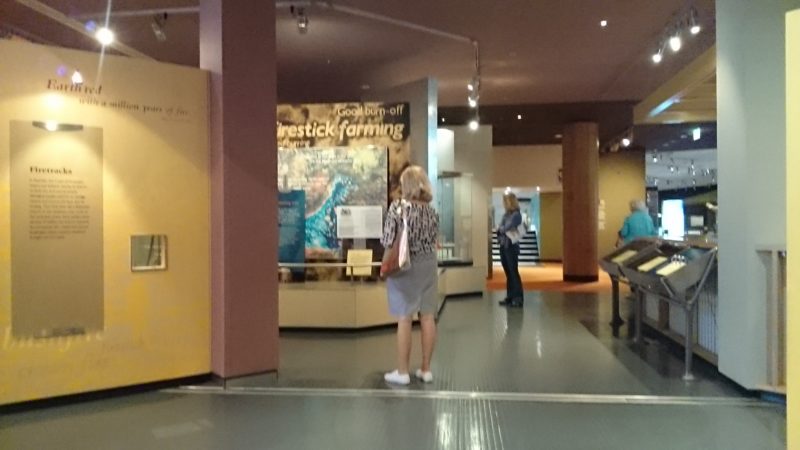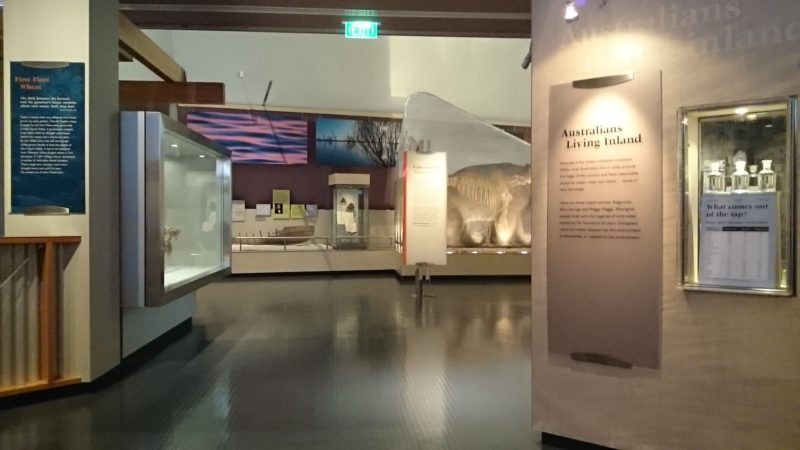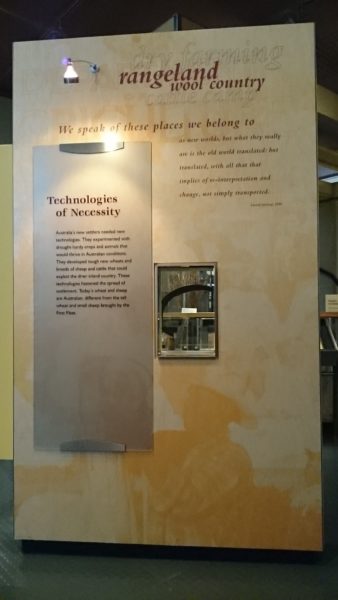Mum asked me how I’ve been making my own sari silk yarn and what it looks like.
So I thought I would do up a quick blog post whilst I drank my Prana Chai this afternoon and show you how I’ve been making it.
Now the yarn I’ve been making isn’t the heavily rolled one, but the one that looks more like ribbon. This is how it looks in the blanket.
It’s the mustard and red coloured stuff in the garter (?) stitch area.
So I start with the old sari, obviously. This one is quite worn, not a glossy silk and matched our autumnal colours so doesn’t stand out considerably which is what we wanted at the time. The next couple of old saris will have slightly brighter colours.
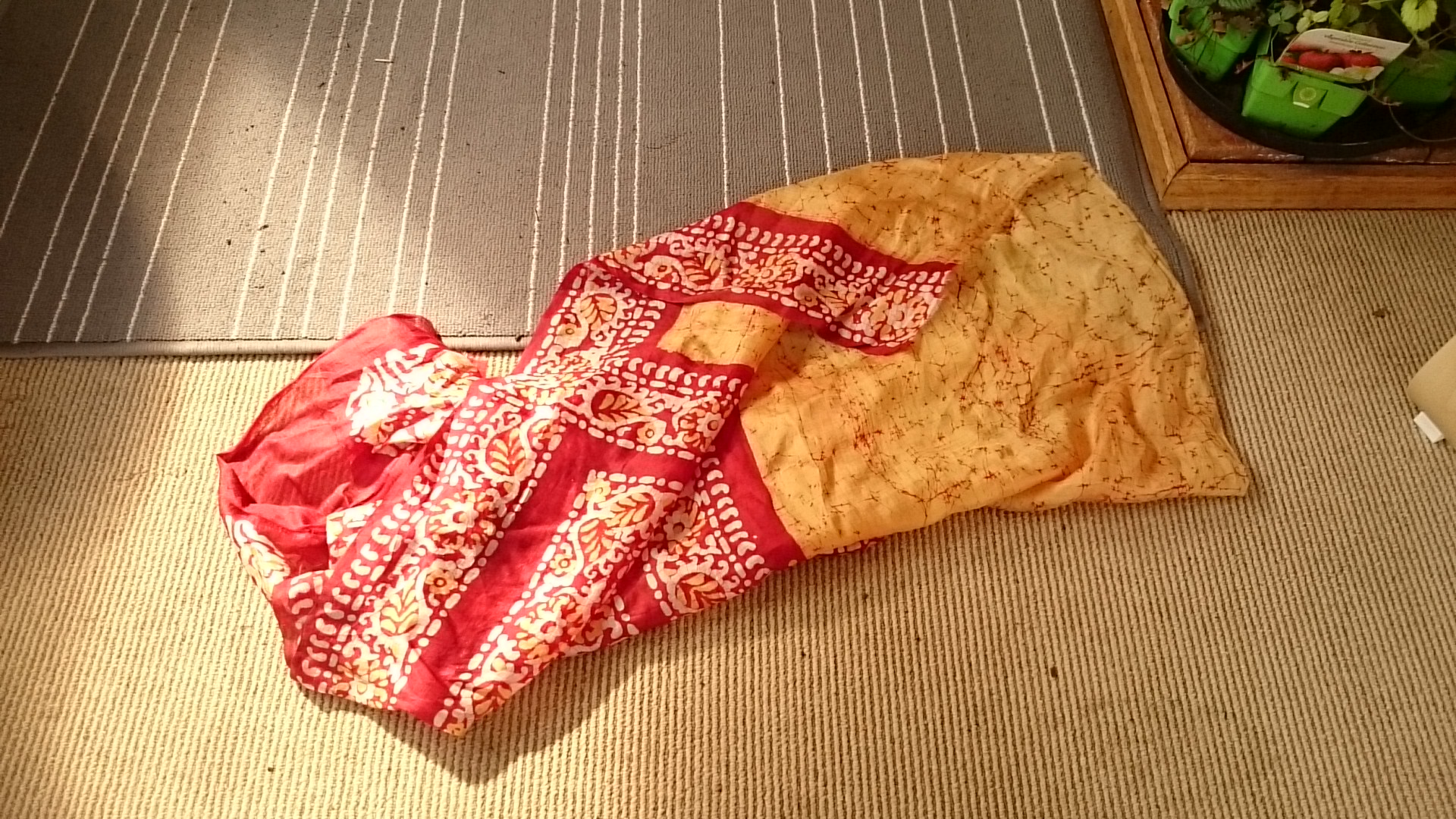
The remains of the sari.
I make scissors cuts in one of the edges, about 3-4cm apart (1.5 inches) apart and then tear the fabric into strips. You need to be careful to keep all the torn fabric in the same direction when you put it down, so I hold onto one end until all of the fabric has been torn.
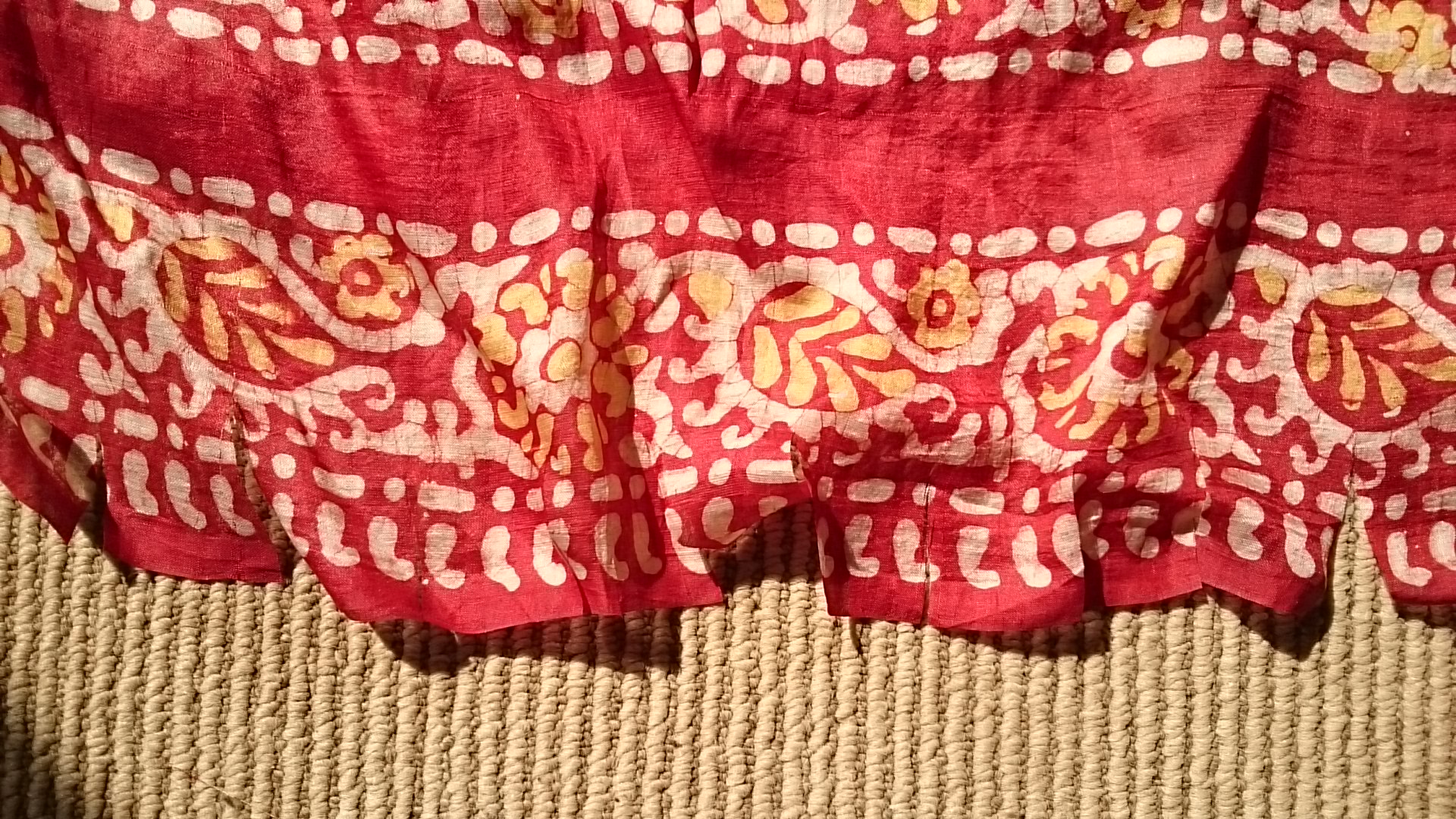
Then it’s a case of cleaning up what you can without loosing too much fabric. I find the silk strands come away easily, so care is needed. On the right below is the uncleaned silk fabric strands. One the left the cleaned ones. The sewing machine is on the left hence working in that direct is easier. Sadly I have yet to find a way of keeping the loose silk strands so I can use those as well which is a shame because you’ll end up with rather a lot of them!
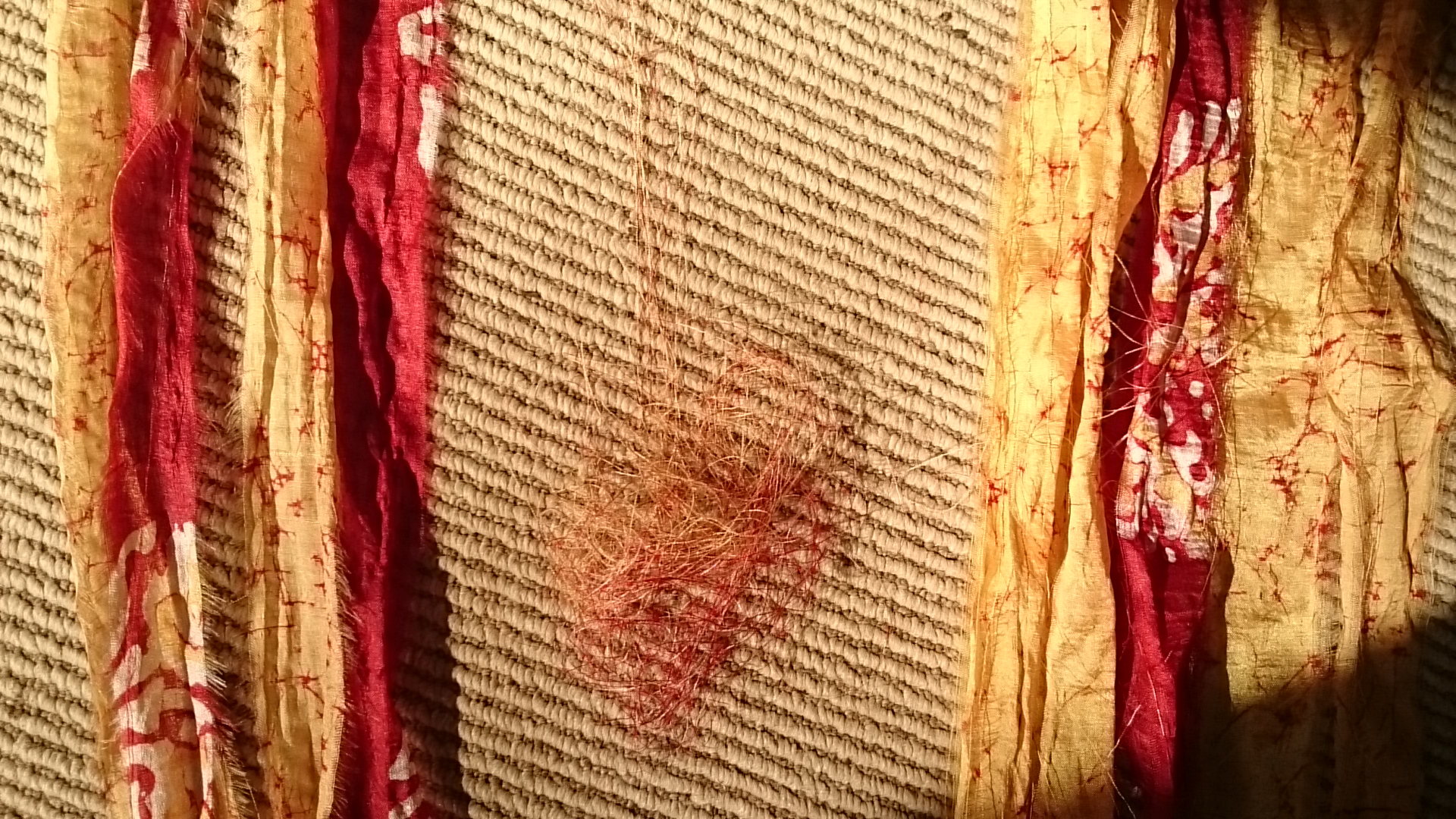
In true Blue Peter style, here’s some I made earlier. It’s still held on to the sewing machine by the needle and thread, so I could make it longer.
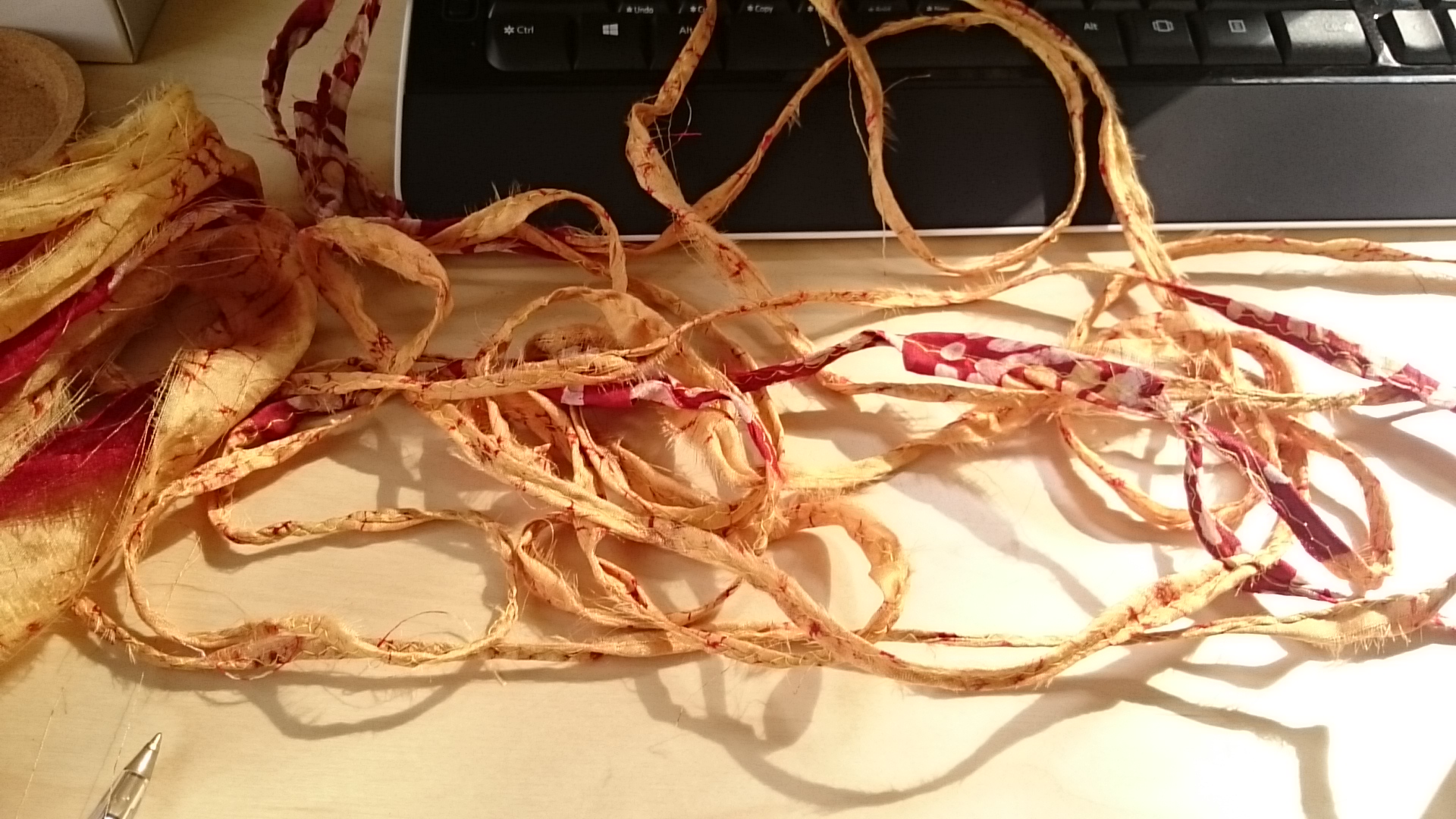
Now I take the new strand and fold the edges in to the middle so that no fraying will occur at the join. I then fold that in half.
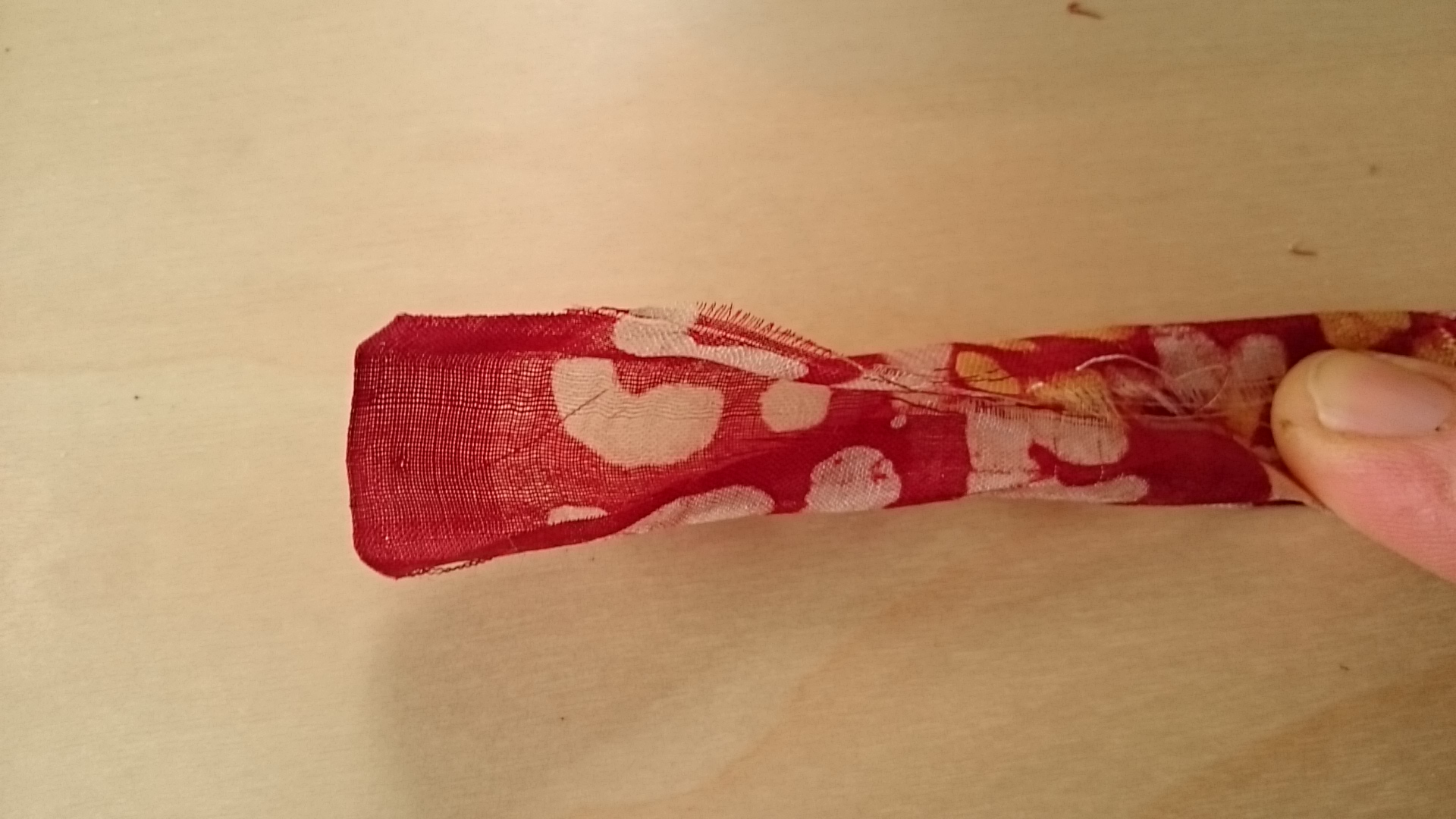
It’s hard to show in photos because all it wants to do is unravel. Next I place the quartered strand into the final piece of the strand on the sewing machine.
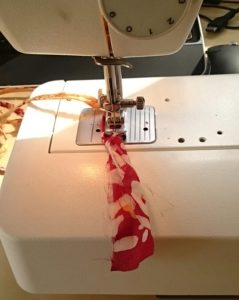 I then fold the old piece over the new one so that both edges of the old piece get folded inwards encasing the new piece. I have also found it exceptionally handy if you ensure that the new strand is inside the old one because it passes over the sewing machine fabric grippers much more easily and doesn’t pucker.
I then fold the old piece over the new one so that both edges of the old piece get folded inwards encasing the new piece. I have also found it exceptionally handy if you ensure that the new strand is inside the old one because it passes over the sewing machine fabric grippers much more easily and doesn’t pucker.
I also put a twist in just as the sewing machine meets the middle of the yarn.
Then it is a case of a wide-ish zigzag stitch twisting randomly as you sew until you reach a free inches from the end of that strand. It doesn’t matter if you miss from time to time, nor which way you twist. I often twist and untwist in the same strand. I’ve found zigzag stitch slightly better than a direct straight stitch because it had a touch more give in it, more stretch.
The end result is a pile of sari silk yarn behind the sewing machine. If you are lucky there won’t be too many loose silk strands caught up on the sewing machine and if you are really lucky, your yarn will match your silk and not been too visible!
The final result for me, from that pile was 50metres or 175 feet of sari silk yarn!
